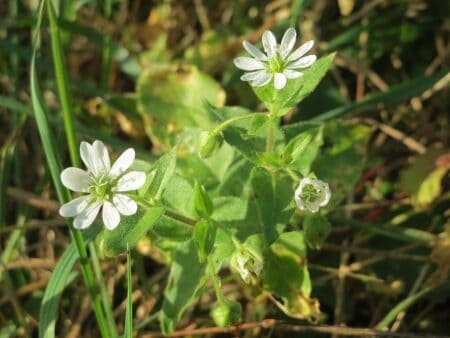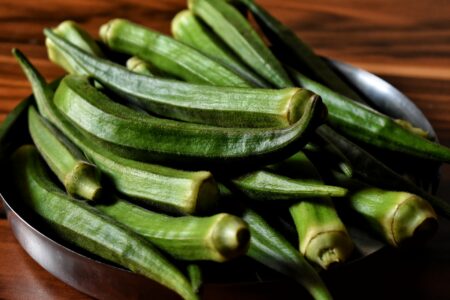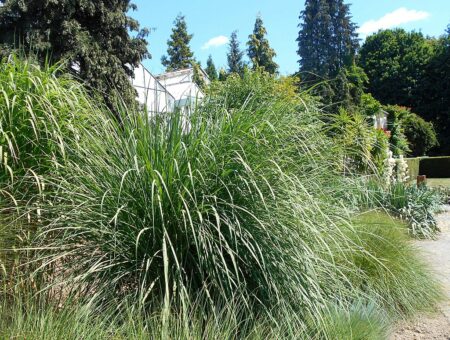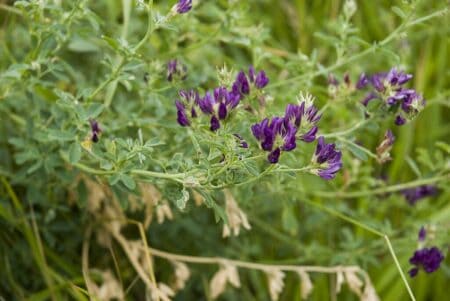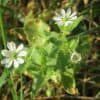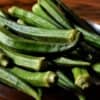If you want a versatile plant in your garden, think sumac.
The Sumac plant is beautiful and easy to grow.
It is useful for cooking, medicinal purposes, and even as a dye for fabrics.
This article will teach you how to grow sumac.
What Is Sumac?
Sumac is a flowering plant that belongs to the family Anacardiaceae.
There are over 250 species of sumac plants. But the species people grow for ornamental and culinary purposes is Rhus coriaria. It is also known as Sicilian sumac or tanner’s sumac.
Sumac has a rich history of use in traditional medicine and cuisine.
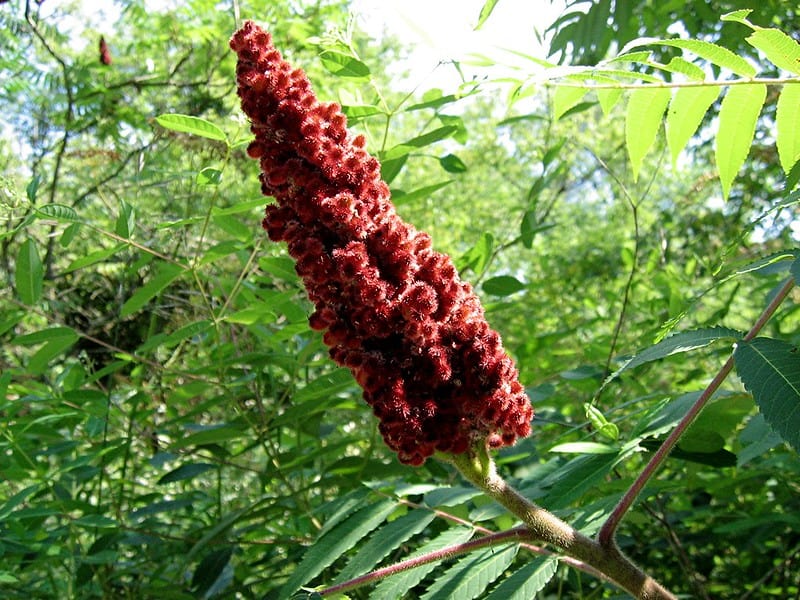
Its berries are high in antioxidants and have a tangy, lemony flavor commonly used as a spice in Middle Eastern and Mediterranean cooking.
Growing sumac has a variety of benefits.
For one, it’s a beautiful plant that can add visual interest to your garden with its vibrant fall colors and delicate flowers.
It’s also relatively low-maintenance and can tolerate a wide range of soil types and growing conditions.
Sumac is a dioecious plant, meaning that it has male and female flowers on separate plants. Because of this, it can be difficult to grow sumac from seed, as you need both male and female plants for successful pollination.
How To Grow Sumac?
Below is everything you need to know about growing sumac.
Planting
Sumac can be grown from seeds, cuttings, or root suckers. If you’re starting from seed, plant them in the fall or early spring.
Sumac seeds have a hard outer shell. Prepare to scarify them by rubbing them with sandpaper or soaking them in warm water overnight before planting.
You will need to plant sumac in well-drained soil and full sun or partial shade to maximize your growing effort.
Choose a location where the plant will have room to spread out. Expect it to grow up to 15 feet (4.5 m) tall and wide.
Watering
Sumac is a drought-tolerant plant. It will require little water when established.
But before then, water the plant regularly, especially during the first year of growth.
Fertilizing
Sumac requires little to no fertilization. Try a balanced fertilizer in the spring to boost its growth.
However, ensure your fertilizer is not high-nitrogen. Nitrogen fertilizers encourage leaf growth at the expense of fruit production.
Pruning
Sumac doesn’t require much pruning. You only need to prune during winter to control its size and shape.
Remember to wear gloves when pruning sumac. The plant causes skin irritation in some people.
Harvesting
Sumac berries are typically harvested in the fall. You need to check that they are fully ripe and bright red.
When ripe, cut off the clusters of berries and allow them to dry in a well-ventilated area.
How To Care for Sumac?
You’d agree that growing sumac is not enough to ensure its longevity and health.
Here are ways to care for the sumac plant.
Pest and Disease Control
Sumac is generally hardy and disease-resistant. But sometimes, it can fall prey to pests like scale insects or spider mites.
If you see signs of infestation, apply neem oil spray to control the pest.
Always look out for signs of fungal diseases with sumac and treat with fungicide. Common sumac fungal diseases are powdery mildew or rust.
Winter Care
Sumac is a deciduous plant that loses its leaves in the winter. During this time, remove any dead or damaged wood.
Further, protect the base of the plant with a layer of mulch to prevent frost damage.
Propagation
You can propagate sumac with its root cuttings in the early spring or fall.
Start by digging up a section of the plant’s root system and cutting it into 3 to 4-inch (7.5 to 10 cm) sections.
Then plant cuttings in a well-draining soil mixture.
How To Harvest and Store Sumac?
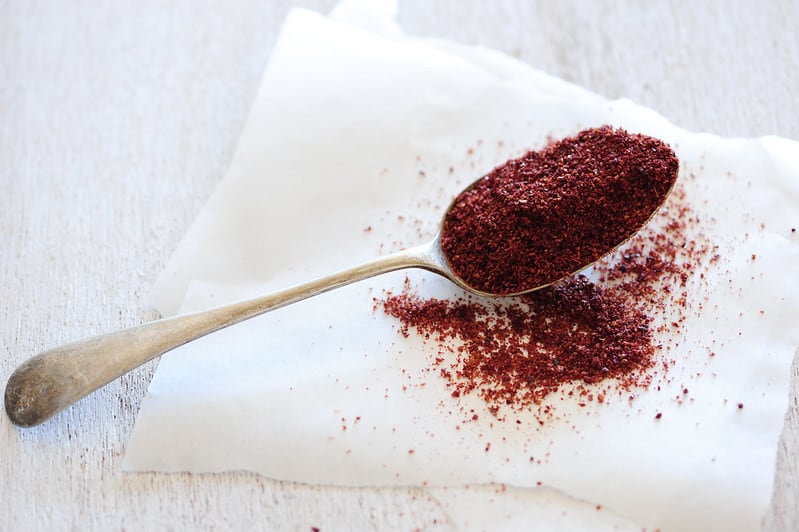
The sumac berries usually ripen in late summer. You can tell they are ready when the berries are deep red.
The best time to harvest sumac is on a dry day when the berries are fully ripe.
To harvest sumac, cut the clusters of berries off the branches with a pair of sharp pruning shears.
You can either harvest the berries individually or cut the entire cluster off and separate the berries later.
Always wear gloves when harvesting sumac to avoid skin irritation.
After harvesting, the next step is to dry the berries.
Spread them out on a flat surface like a baking sheet. Leave them in a dry but well-ventilated area for a week or two.
After the berries dry, remove the seeds and grind the remaining sumac berries into a fine powder.
You can store the sumac powder in a tight container for 5-7 months to use in your cooking or herbal remedies.
Sumac has a tart, citrusy flavor that adds a unique twist to many dishes. Try using it as a rub for meats or seasoning for salads, dips, or marinades.
Possible Problems
Sumac is generally a hard plant but has its share of problems.
Here are common ones with ways to solve them.
Overgrowth
Sumac can grow quite vigorously and take over other plants in your garden.
Regular pruning and removal of suckers can help keep the plant in check.
Skin Irritation
Sumac leaves and berries contain a substance called urushiol. This mixture of organic compounds causes skin irritation in some people.
Always wear gloves and protective clothing when handling sumac. Avoid burning any parts of the plant, as the smoke can cause respiratory irritation.
Pests
Sumac can attract pests like Japanese beetles, aphids, spider mites, and scale insects. These pests can destroy the leaves and stems of the plant.
When you notice this pesky pest, spray immediately with neem oil spray.
You can also attract beneficial insects like ladybugs and lacewings to help control the pest population.
Diseases
Sumac can be susceptible to some diseases like leaf spots, powdery mildew, and root rot.
To prevent these diseases, ensure proper watering and avoid watering the leaves. You can also use fungicides if necessary.
Conclusion
Your garden with sumac plants will spring with a versatile cooking, medicine, or even ornamental plant.
But you must do your share of the work by preventing diseases and plants.
Sumac is generally hardy. So don’t be alarmed.
Follow the tips above, and you’d be on your way to having healthy sumac to season your next salad.


